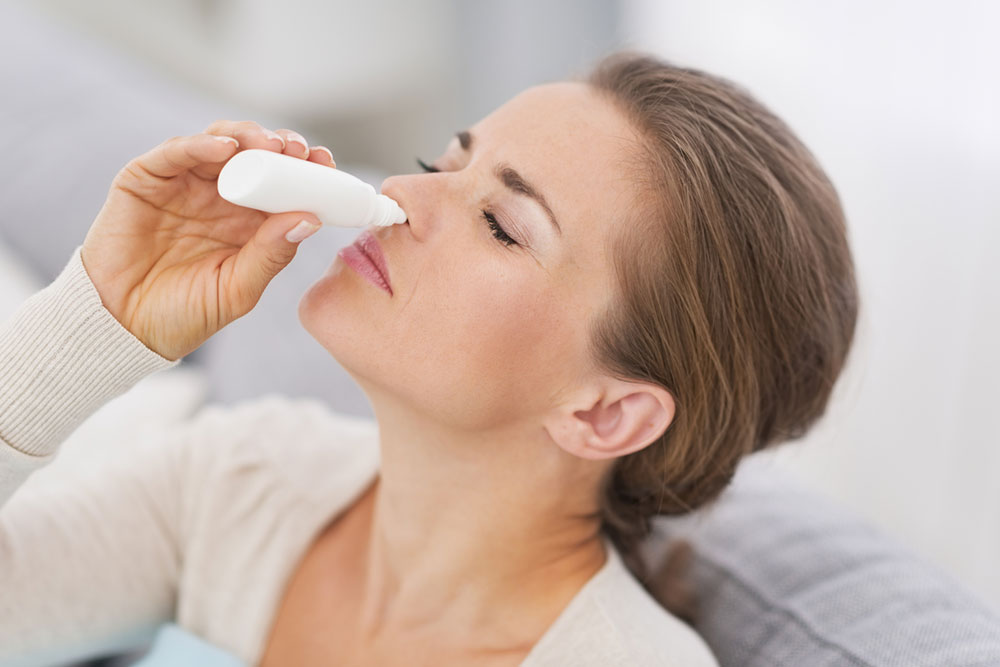Top Treatment Options for Post Nasal Drip
A lot of people experience postnasal drip at some point in their lives. The nose and throat naturally produce mucus to moisten the nasal membranes, clear the nasal passage, and fight infection.
However, in case the body starts producing extra mucus, it might get collected in the back of the throat. You may also feel a leaking sensation, where the mucus drips down your throat from the nose. This is termed as postnasal drip.
Some of the most common symptoms of postnasal drip are as follows:
- A bad cough that gets worse at night
- Bad breath
- Sore throat
- Nausea
- An uncomfortable feeling that you constantly need to clear your throat
Common Causes of Postnasal Drip
Sometimes, the mucus produced cannot be properly cleared away, resulting in a postnasal drip.

- Allergies
- Colds and flu
- Sinusitis or sinus infection
- Pregnancy
- Certain blood pressure medications
- Object stuck in the nose
- Changing weather or excessively cold temperatures
- Fumes from cleaning products, smoke, perfumes, etc.
- Deviated septum
- Certain foods, especially spicy foods
Best Postnasal Drip Treatment
The best postnasal drip treatment depends upon the cause. They can be caused due to bacterial and viral infections. In case of a bacterial infection, taking antibiotics can be helpful in finding relief.
Moving on, nasal decongestants and antihistamines can help in treating cold and virus infections. Conventional, over-the-counter antihistamines such as chlorpheniramine and diphenhydramine are not ideal postnasal drip treatment options as they tend to thicken the secretions. On the other hand, newer medicines such as cetirizine, loratadine, desloratadine, and fexofenadine are more suitable and also have fewer side effects. It is important to note that all these medicines can cause dry mouth and drowsiness. Thus, it is best to consult your doctor before taking any.
Steroid nasal sprays can be used for treating postnasal drip caused by allergies.
Other Postnasal Drip Treatment Options
In order to completely clear the extra mucus, it is important to keep it thin. Thick mucus can be troublesome as it tends to stick and cause blockages in the ears and sinuses. Therefore, it is best to take the following steps:
- Use saline nasal sprays or neti pot to flush out the extra mucus.
- Use medications such as guaifenesin
- Use a humidifier or vaporizer to increase the air’s moisture content.
- Dust and vacuum regularly
- Hold up your pillows at night to avoid the buildup of mucus at the back of your throat
- Cover your pillows, bed sheets, and mattresses with dust-mite-proof covers
- Wash all sheets and pillow covers in hot water
The best postnasal drip treatment in the case of a deviated septum is corrective surgery. Also known as a septoplasty, in this, the nasal septum is surgically straightened and centered.
Another effective postnasal drip treatment is loading up on Vitamin C. Vitamin C is a powerful antioxidant that can boost the immune system and protect the body from various kinds of infections. Therefore, it is best to take lemon in warm water to treat postnasal drip, owing to its amazing antibacterial and antiviral properties.
Chicken Soup
For centuries, consuming hot soup or any other hot liquid is believed to be the best folk remedy for treating postnasal drip. While this remedy does not cure the condition, the hot steam from the liquid helps in offering temporary relief. The steam opens up the stuffy nose and also thins the mucus. At the same time, it prevents your body from getting dehydrated. For the same reason, a hot steamy bath is also believed to be quite helpful. Consume plenty of water to stay fully hydrated. This will prevent the thickening of mucus and keep the nasal passages clean and moistened.
When to See a Doctor for Postnasal Drip Treatment?
In case the symptoms do not go away and persist for longer than 10 days, even after constant postnasal drip treatment, it is important to consult a doctor. He or she might ask you to get a CT scan, X-rays or other tests to evaluate your condition. Also, if you witness any of these symptoms, consult medical help immediately:
- Fever
- Wheezing
- Mucus with a potent odor
- Greenish yellow or bloody mucus
A lot of times, these symptoms indicate a bacterial infection, which will be treated through suitable antibiotics.
If postnasal drip is the result of GERD or acid reflux, your doctor will perform the necessary tests to confirm the case. Consequently, he/she will prescribe the suitable medications to properly cure the condition.

